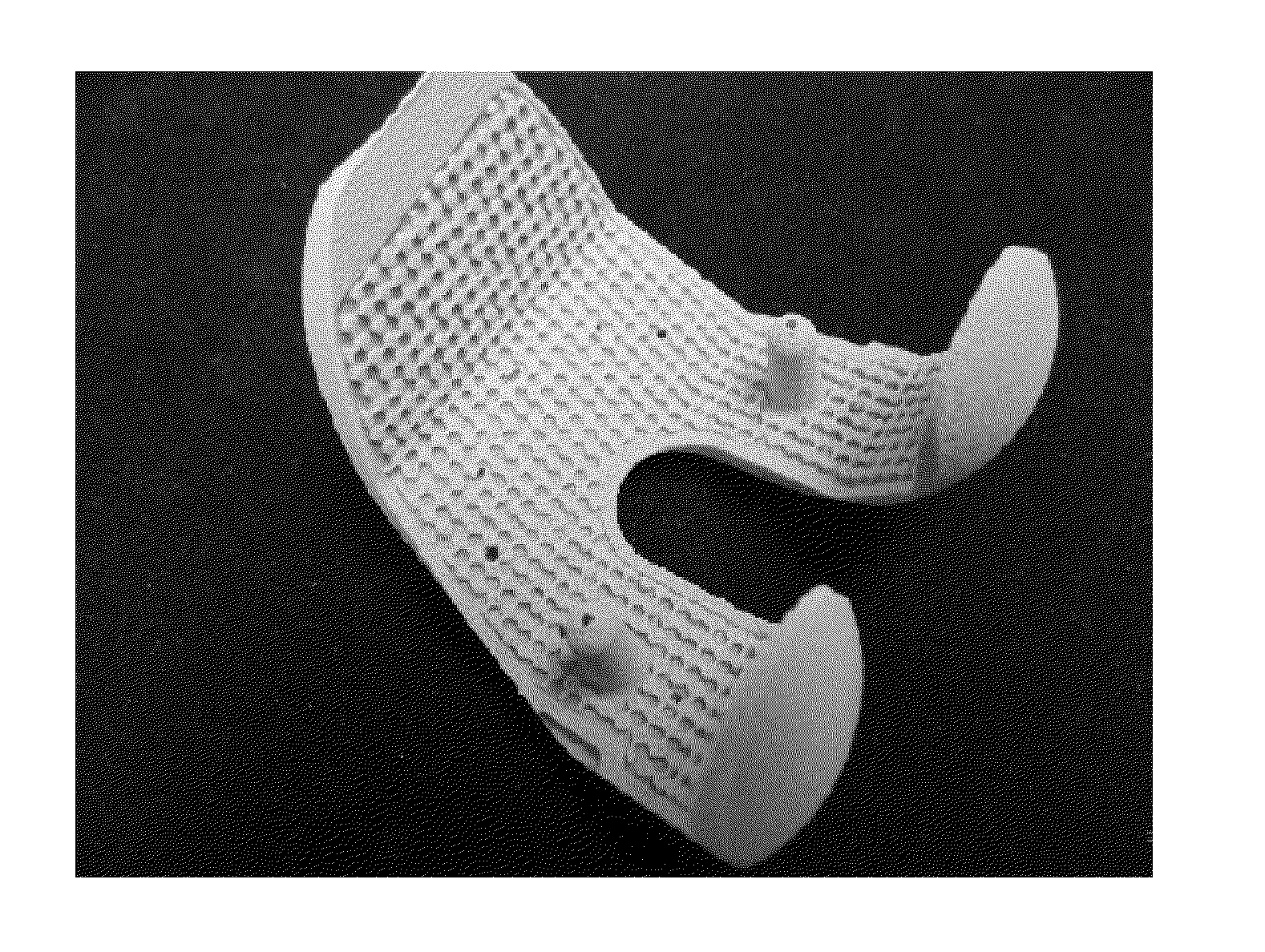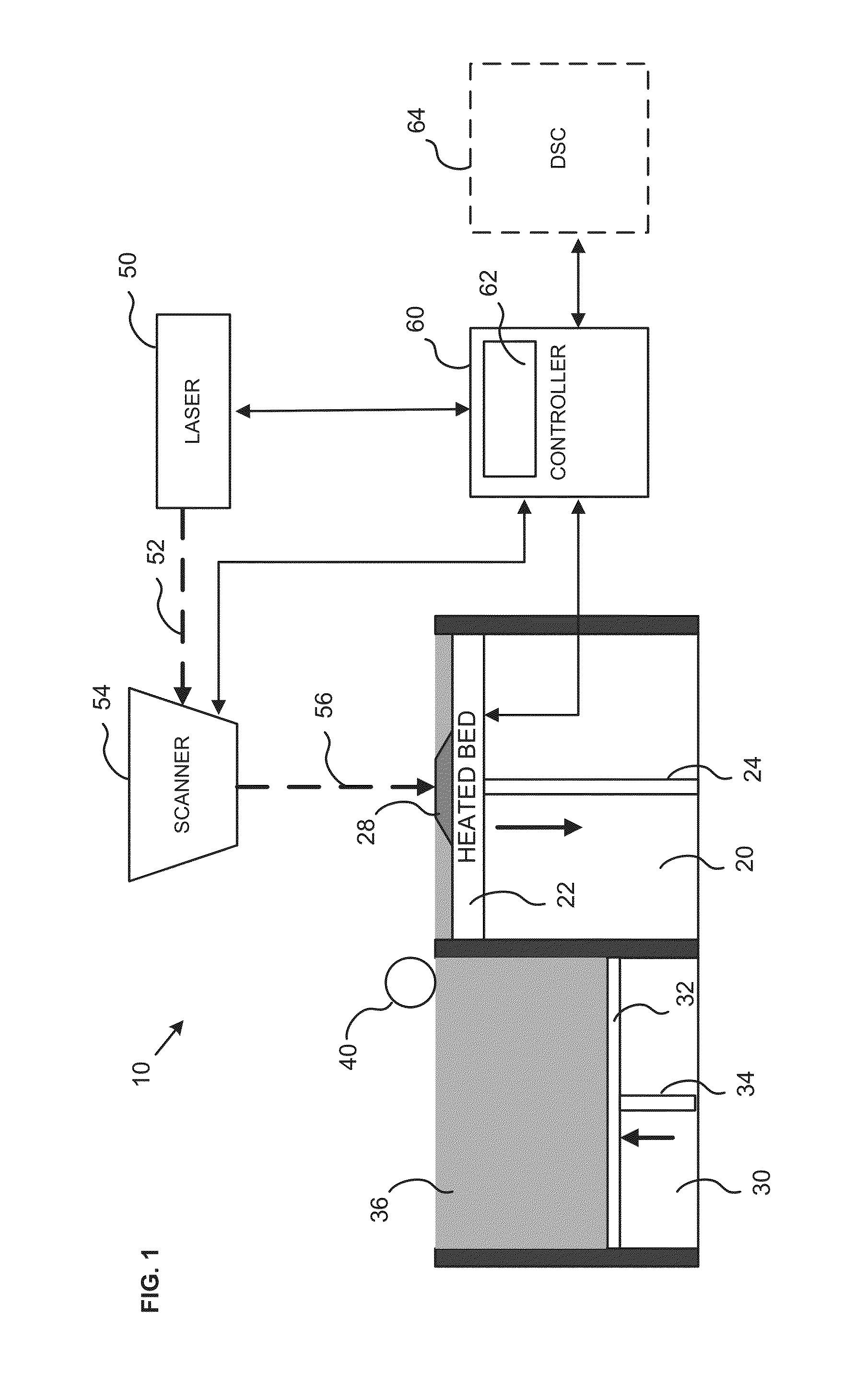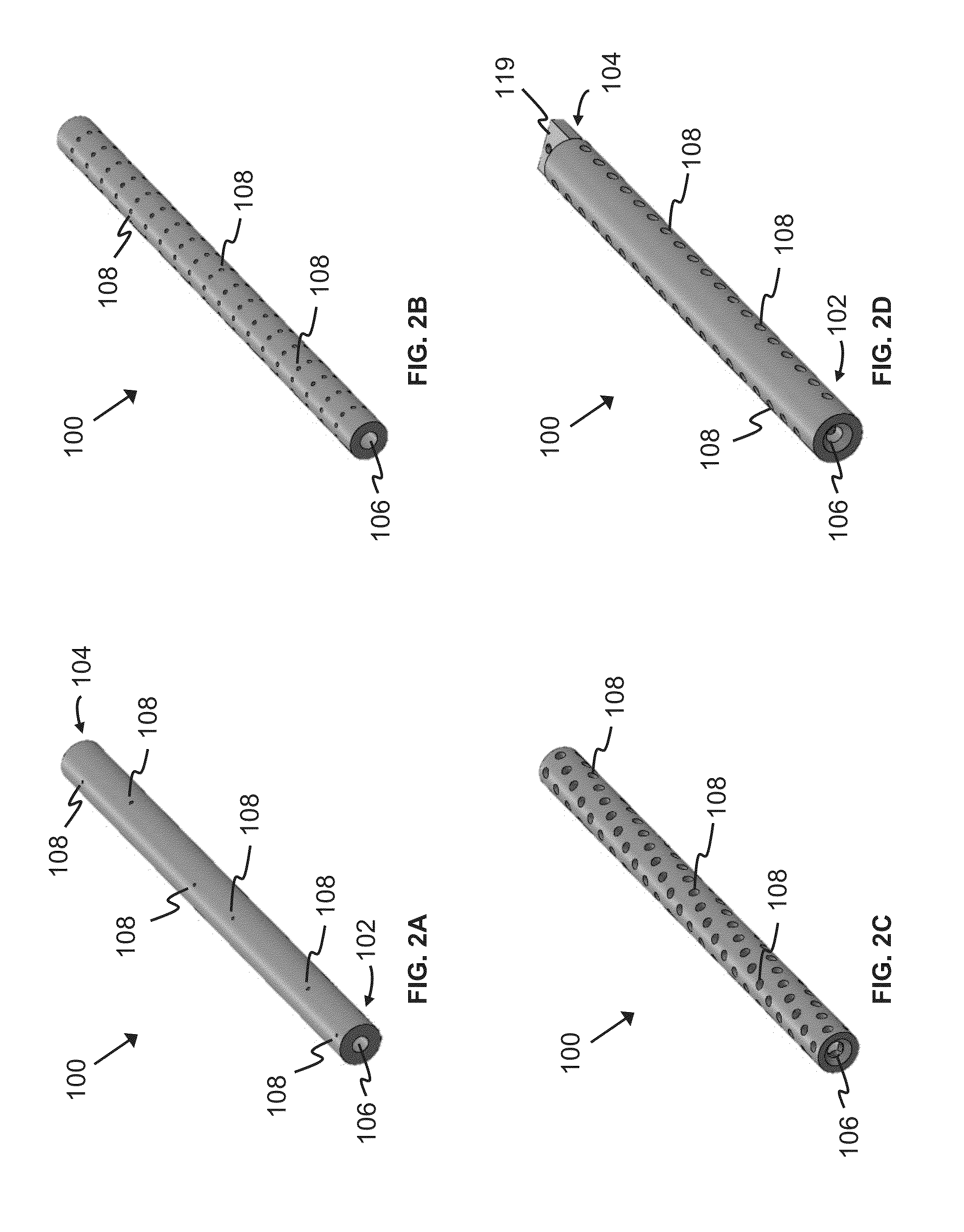Methods and Systems For Local Administration of Therapeutics
- Summary
- Abstract
- Description
- Claims
- Application Information
AI Technical Summary
Benefits of technology
Problems solved by technology
Method used
Image
Examples
Embodiment Construction
[0035]The present teachings are described more fully hereinafter with reference to the accompanying drawings, in which the present embodiments are shown. The following description is presented for illustrative purposes only and the present teachings should not be limited to these embodiments.
A. Selective Fusion of Polymers to Form an Implant
[0036]Selective laser sintering (“SLS”) is an additive manufacturing technique that uses electromagnetic radiation from a laser to fuse small particles of plastic, metal (direct metal laser sintering), ceramic, or glass powders into a mass that has a desired three dimensional shape. The laser selectively fuses powdered material by scanning cross-sections according to a three dimensional digital description of the part, also referred to as a build file, on the surface of a powder bed. After a cross section is scanned, the powder bed is lowered by one layer thickness, a new layer of material is applied, and the bed is rescanned. This process is rep...
PUM
| Property | Measurement | Unit |
|---|---|---|
| Pressure | aaaaa | aaaaa |
| Structure | aaaaa | aaaaa |
| Viscosity | aaaaa | aaaaa |
Abstract
Description
Claims
Application Information
 Login to View More
Login to View More - R&D
- Intellectual Property
- Life Sciences
- Materials
- Tech Scout
- Unparalleled Data Quality
- Higher Quality Content
- 60% Fewer Hallucinations
Browse by: Latest US Patents, China's latest patents, Technical Efficacy Thesaurus, Application Domain, Technology Topic, Popular Technical Reports.
© 2025 PatSnap. All rights reserved.Legal|Privacy policy|Modern Slavery Act Transparency Statement|Sitemap|About US| Contact US: help@patsnap.com



